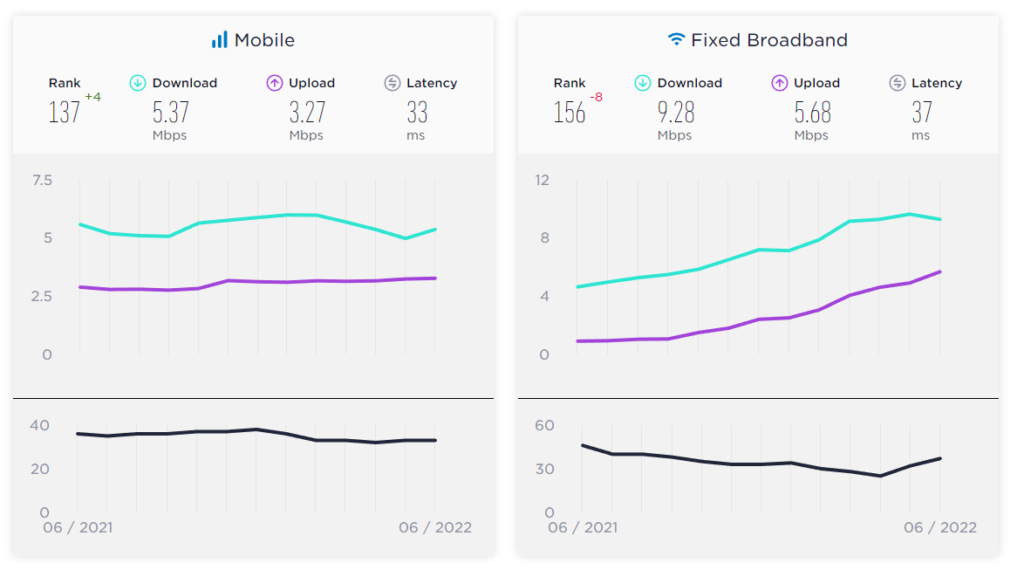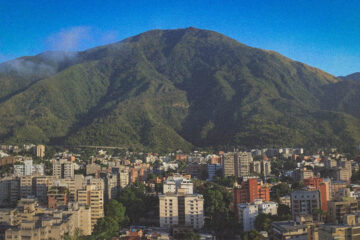It’s time for another yearly edition of The (absolute) state of Venezuelan internet.
Quite a few developments have happened in the past year when it comes to internet access and its quality down here. Unlike our stagnant political crisis and temporarily forestalled economical collapse, internet connectivity has kept its slow and steady general trend towards improvement courtesy of a de-regularization of the market that has allowed new actors in the fold.
If you can afford it, that is.
Just like with everything else in this country, results may wildly vary depending on who you ask, and which corner of the country they live in.
So, without further ado, here’s a look at the state of it, as well as an account of my journey towards getting a better internet service in an area of Caracas with little to no options available.
Internet in Venezuela, or rather, the quality of the service you receive, depends on your zone’s availability, yes that’s a fact. But zone availability aside, it really, really depends on the one thing the Supreme and Eternal Commander (actual title) told us was the source of all the evils in the world: The United States Dollar.
If you have dollars you can have a ‘good’ or even exceptionally great internet connection, it’s that simple enough. The absolute sheer majority of the country still has to depend on CANTV, the government ISP, and all of its obsolete ADSL technology to have access to the internet.
CANTV can and will fail at any given time, leaving entire communities disconnected for weeks, months, or even years without any response from the government.
If you happen to have the number of a CANTV staff then you can perhaps come to some sort of arrangement, and pay them to reconnect you unless the problem is too severe to repair. Now, here’s the thing, the government barely pays them, so, out of necessity, they will succumb to corruption, and there’s been many countless cases of staff purportedly disconnecting people so they get paid to ‘fix’ it.
Then a few months later they disconnect you again, or they reconnect you at the expense of another, it’s a vicious never ending cycle — trust me, I’ve been there plenty of times now.
The Venezuelan regime has kept granting licenses to new private ISPs that have started to cover the deficiencies here and there (for those that can afford it, that is), as such, there’s way more providers these days than a few years ago and ways to escape the void that is CANTV, with very different offerings that make you go from ‘wtf this is absurdly expensive for what it is’ to ‘wtf this is so cheap than the others, they must be laundering money.’
My birthplace, Maracaibo, for instance, has access to high speed fiber and even gigabit internet in certain areas at relatively great prices — the caveat, though, is that it is Maracaibo, so you have to weather through the barely working water infrastructure, the constantly failing power grid, the crime, and very loud and foul mouthed Zulians such as myself.
Caracas, the crown jewel seat of the Bolivarian Revolution, which the regime keeps shielded from the worst effects of the collapse they wrought upon the nation, is actually behind other cities in the country when it comes to connectivity.
Here, fiber is only available in more ‘feasible’ areas like the east, where the more affluent live. Some new players have started to slowly deploy fiber here and there, but it’s gonna be years before either has a decent foothold in the city. Most of the private ISPs in Caracas operate via WISP networks, which are quite costly and not exactly ideal, but that’s all there is, if you don’t like it you can go to CANTV, or hit or miss private ISPs like Inter and Netuno.
Many of the WISPs in Caracas, which cost an arm and a leg, only offer speeds that are marginally better than what the government’s ADSL provides, sometimes even slower (2-3Mbps) but can go all the way to 100mbps or more, with monthly service fees that I would not call cheap.
If you check Speedtest’s global index, you’ll notice that we’ve been bumped up a few spots and we’re no longer at the absolute rock bottom, that’s primarily because of private ISPs.
CANTV has finally started to ‘modernize’ it’s ADSL service with VDSL and fiber, but that’s still years away from being able to provide a better internet connection to the majority. Currently, it’s only available in a handful of pilot buildings here and there.
The same goes for ISPs like Inter and Netuno, which have been in the country for many years now, they’ve also begun to modernize their network, but they still don’t operate in many areas of the country, such as this one, that’s where WISPs have the upper edge, because being a wireless service allows them to capture clients in areas with no fiber or Hybrid fiber-coaxial available.

Mobile is still a disaster, and with the government largely regulating rates, there is no real incentive to invest in infrastructure. I barely get mobile signal in my house and I’m literally in the capital of the country.
There are three cell phone carriers in the country, and one of them is owned by the government. The other two are privately owned, but that doesn’t make them automatically good, they’re slightly better, each in their own ways — with one of them, Movistar, recently admitting that they’ve intercepted 20% of its user base at the government’s request, which includes wiretapping calls and text messages, monitoring internet traffic, and location tracking.
Mobile data caps are still very restrictive. My absurdly grandfathered mobile plan only gets me 400mb of data per month, and while I can pay for more, there’s a hard cap of 5gb per month, if you go past it you automatically get yeeted until the next month.
If you do not have access to US Dollars, cannot afford the very pricey setup fees with Bolivars, or there’s simply no other service available in your area, then your only choice is to do what I had to do for most of my life, suck it up and deal with the government’s CANTV — however, even CANTV has begun to be out of reach of some in the country.
After years of virtually free service, which extended throughout the COVID pandemic, the government has begun to ‘normalize’ it’s rates, and they’ve begun to exponentially increase over the course of 2022, for example, my March 2022 CANTV bill was about 24 Bolivars ($4), the one I paid yesterday was 90 Bolivars ($15), even though service remains the same: 4mbps download, 0.75mbps upload.
The current minimum wage is about 130 Bolivars, with more than 94.5% of the country living in poverty, and about 75% living in extreme poverty, the internet is starting to become inaccessible for some.
That is part of the ever widening breach in the country, which grows larger with each passing day.
Censorship is another ongoing matter. The government ordered to block access to 59 websites in 2021 alone, many of them being news websites or sites with political content. They will block websites at a whim, and private ISPs have no choice but to comply if they want to keep operating.
Not all ISPs maintain the same blocklists. Some new private ISPs have not implemented them (yet), while others haven’t been updated in a while, for instance, my phone carrier still blocks Reddit even though the government ISP does not.
So, generally speaking, internet access remains as-is, a zero-sum of better speeds here and there, but bad quality in others, with new providers offering alternatives for those that can afford it.
I’ll go through my journey towards a better internet connection in part 2, which you can access by clicking here.


